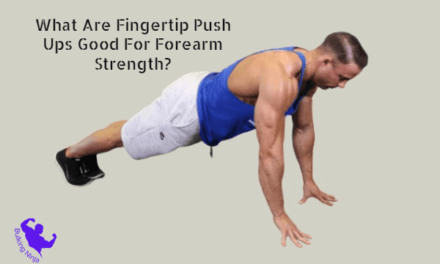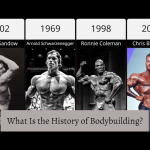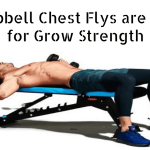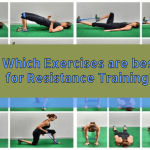In the pursuit of a robust and well-defined upper body, it’s essential to have a well-rounded approach to strength training. Dumbbell flyes, often underestimated in the gym, can be a secret weapon in your arsenal for building chest and shoulder strength.
This exercise, which mimics the graceful movement of a bird’s wings, offers a unique range of motion that targets the pectoral muscles in a way that traditional chest exercises often cannot.
In this blog post, we’ll delve into the benefits of incorporating dumbbell flyes into your workout routine and how dumbbell chest flys are good for grow strength they can help you grow stronger and more sculpted chest and shoulder muscles.
Whether you’re a seasoned weightlifter or just starting on your fitness journey, understanding the power of dumbbell flyes is a step toward achieving the upper body strength and physique you desire.
Table of Contents
- Dumbbell Chest Flys are Good for Grow Strength
- How to Perform a Dumbbell Chest Fly?
- Which Muscles are used in Dumbbell Chest Flys?
- Does Dumbbell Chest Fly Build Muscle?
- What are the Health Benefits of Dumbbell Chest Flys?
- Other Variations of Dumbbell Chest Flys?
- Mistakes To Avoid While Doing Dumbbell Chest Flys
- Frequently Asked Questions
- Conclusion
Dumbbell Chest Flys are Good for Grow Strength
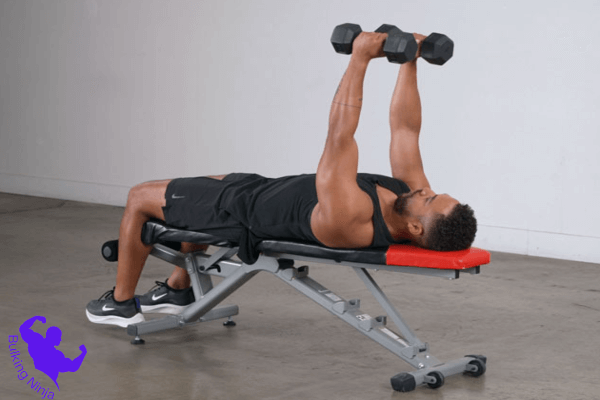
The dumbbell chest fly is a highly effective exercise designed to strengthen the chest and shoulder muscles. Typically performed while lying on your back, this exercise can be done on either a flat or an incline bench, each targeting the chest muscles at different angles for comprehensive strength development. The movement involves extending the arms with dumbbells and then bringing them together in a flying motion, engaging not just the pectoral muscles but also the shoulders.
Beyond the traditional approach, there’s also a standing variation of the dumbbell fly, offering a different dynamic and muscle engagement. This versatility in execution makes the dumbbell chest fly a valuable addition to any strength-training regimen, particularly for those aiming to grow and enhance chest and shoulder strength.
How to Perform a Dumbbell Chest Fly?
- Equipment Needed For Dumbbell Chest Flys, you’ll need two dumbbells, ranging from 3–10 pounds. A bench is optional but beneficial, especially for the traditional chest fly.
- Selecting Weights Beginners should start with light weights, such as 3 to 5 pounds. Those more advanced in upper body exercises might opt for 8 to 10 pound weights, increasing the weight as their strength improves.
- Positioning Lie flat on your back on a flat or incline bench, with feet firmly planted on the floor. Ensure that your head and back are firmly pressed against the bench throughout the exercise.
- Starting the Exercise Have a spotter hand you the dumbbells, or gently pick them up from the floor, holding one in each hand. Lift your arms above your head, keeping them extended but not locked out. A slight bend at the elbow is ideal, with palms facing each other.
- Executing the Fly Inhale and slowly lower the dumbbells in an arc motion until they are in line with your chest. Keep your arms extended to the sides but not locked out, and do not drop your arms lower than your shoulders.
- Completing the Movement Exhale and slowly press the dumbbells back up in the same arc motion. Aim to perform 10–15 reps, then rest before completing a total of 3 sets.
This methodical approach to Dumbbell Chest Flys effectively engages and strengthens the chest muscles, making it a valuable exercise for upper body development.
Which Muscles are used in Dumbbell Chest Flys?
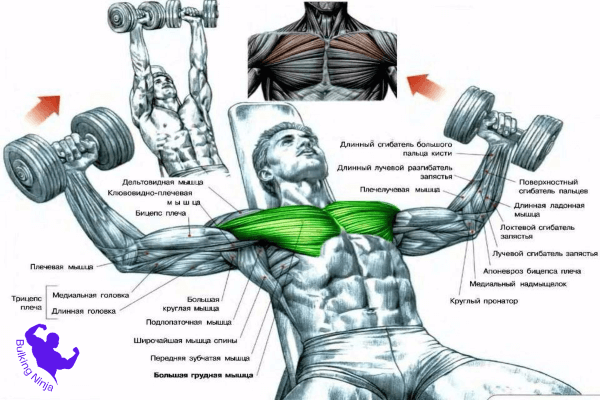
Let’s delve deeper into the involvement of each muscle group during Dumbbell Chest Flys:
-
Pectoral Muscles (Chest)
- The major muscle group targeted in this exercise is the pectoralis major, which comprises two parts: the clavicular (upper) and the sternal (lower) head.
- During the fly movement, as the dumbbells are brought together above the chest, the pectoral muscles are primarily responsible for the horizontal adduction of the shoulder joint.
- This exercise effectively isolates and activates these muscles, particularly emphasizing the stretching and contracting motions, which are crucial for muscle hypertrophy and strength.
-
Deltoids (Shoulders)
- The anterior deltoids play a significant supporting role in this exercise.
- These muscles assist in stabilizing the shoulder joint throughout the movement, ensuring a smooth arc as the weights are lifted and lowered.
- While the deltoids are not the primary focus, their engagement is critical for maintaining proper form and preventing injury, especially as the weights move away from the body.
-
Triceps
- The triceps brachii, located at the back of the upper arm, are secondary players in this exercise.
- Their main role during the dumbbell chest fly is stabilization. They help to keep the arms extended, though without significant elbow movement, ensuring that the focus remains on the pectoral muscles.
- The involvement of the triceps contributes to overall arm and upper body strength, complementing the pectoral muscle development.
In summary, while the dumbbell chest fly predominantly targets the pectoral muscles, contributing to chest strength and development, it also engages the anterior deltoids and triceps for stabilization and support. This comprehensive engagement makes it an effective exercise for enhancing upper body strength and aesthetics.
Does Dumbbell Chest Fly Build Muscle?
Dumbbell Chest Flys are effective for building muscle in the chest area. Here’s how they contribute to muscle growth:
- Targeted Muscle Hypertrophy The primary focus of Dumbbell Chest Flys is on the pectoral muscles. By performing this exercise, you engage the pectoralis major, specifically targeting its sternal and clavicular heads. This targeted engagement is crucial for stimulating muscle growth in the chest.
- Muscle Stretch and Contraction One of the key aspects of muscle building is the stretch and contraction of the muscle fibers. During a chest fly, when you lower the dumbbells out to the sides, your chest muscles are stretched. Then, as you bring the dumbbells back up, the muscles contract. This stretch and contraction cycle is excellent for promoting muscle hypertrophy (growth).
- Isolation of Chest Muscles Unlike compound movements like the bench press, which involve multiple muscle groups (chest, shoulders, triceps), the chest fly more specifically isolates the chest muscles. This isolation allows for a more focused exercise on the chest, leading to better muscle development in that area.
- Tension on the Muscles Throughout the movement, there is constant tension on the chest muscles, especially at the point of peak contraction when the dumbbells are brought together. This continuous tension is a key factor in muscle growth.
- Variability for Growth You can modify the exercise (like adjusting the angle of the bench) to target different parts of the chest, which can lead to more comprehensive muscle development.
It’s important to note that while Dumbbell Chest Flys are effective for building chest muscle, they should be part of a balanced workout routine that includes both compound and isolation exercises for overall muscle development and strength. Proper form, consistent training, and a suitable diet are also crucial for muscle building.
What are the Health Benefits of Dumbbell Chest Flys?
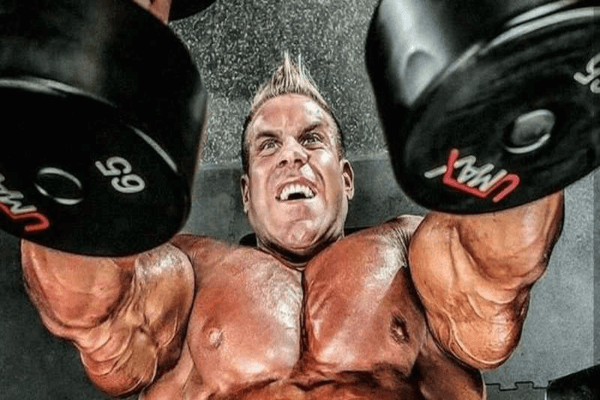
Dumbbell Chest Flys offer several health benefits, making them a valuable addition to a well-rounded fitness routine:
- Improved Muscle Strength and Size Regularly performing Dumbbell Chest Flys helps increase the strength and size of the chest muscles, particularly the pectoralis major. This muscular development is beneficial not just for aesthetic purposes but also for overall upper body strength.
- Enhanced Shoulder Stability and Mobility This exercise involves the shoulders and helps in strengthening the shoulder girdle, thereby improving shoulder stability. Additionally, it can enhance the range of motion in the shoulders, which is beneficial for daily activities and other exercises.
- Better Posture Strengthening the chest and shoulder muscles can lead to improved posture. A strong chest helps balance the upper body, counteracting the tendency to slouch, especially for individuals who spend long hours sitting or working at a computer.
- Upper Back Pain Relief By opening up the chest and strengthening the muscles around the shoulders and upper back, Dumbbell Chest Flys can help alleviate upper back pain. This is particularly beneficial for those who suffer from tightness or discomfort due to poor posture or prolonged sitting.
- Increased Functional Strength The movement in the chest fly exercise mimics some daily life activities, like pushing open a heavy door or hugging. Therefore, improving in this exercise can translate to increased functional strength, making everyday tasks easier.
- Flexibility Improvement The motion of bringing the arms wide apart and then back together helps improve flexibility in the chest and shoulder area. This increased flexibility can reduce the risk of muscle strains and injuries.
- Joint Health Since the exercise doesn’t involve locking out the elbows or putting excessive strain on the joints, it is relatively joint-friendly, especially when done with proper form and appropriate weight.
- Balance and Coordination Performing the exercise with dumbbells requires a level of balance and coordination, engaging stabilizing muscles and improving overall body coordination.
- Mental Health Benefits Like many forms of exercise, Dumbbell Chest Flys can also contribute to better mental health by reducing stress, improving mood, and promoting a general sense of well-being.
Including Dumbbell Chest Flys in a comprehensive workout routine can thus offer numerous physical and mental health benefits. However, it’s important to perform the exercise with proper form to maximize benefits and minimize the risk of injury.
Other Variations of Dumbbell Chest Flys?
There are several variations of Dumbbell Chest Flys that can add diversity to your workout routine and target your chest muscles from different angles. Here are some popular variations:
Incline Dumbbell Fly Performed on an incline bench, this variation places more emphasis on the upper chest (clavicular head of the pectoralis major). It’s excellent for developing the upper part of the chest.
Decline Dumbbell Fly Done on a decline bench, this version targets more of the lower chest muscles. It’s a good variation for focusing on the sternal head of the pectoralis major.
Flat Bench Dumbbell Fly This is the standard version of the exercise, performed on a flat bench. It evenly targets the entire chest area.
Single-Arm Dumbbell Fly Performing the fly with one arm at a time can help improve muscle imbalances and increase core engagement, as your body has to work harder to stabilize.
Dumbbell Fly with a Twist Adding a twist at the end of the movement, where you slightly rotate your wrists, can engage the chest muscles differently. This small modification can add a new stimulus to the muscles.
Cable Flys While not a dumbbell exercise, using a cable machine for chest flys provides constant tension throughout the entire range of motion, which can be beneficial for muscle growth.
Pec Deck Machine Fly Another alternative to dumbbell flys, the pec deck machine helps in maintaining constant tension on the chest muscles and can be easier for beginners who are learning the movement pattern.
Standing Dumbbell Fly Performed in a standing position, usually bending forward slightly, this variation engages the core more and can be a good way to change the angle of resistance.
Floor Dumbbell Fly Done by lying on the floor, this variation limits the range of motion, which can be useful for those with shoulder issues or for focusing more on the mid-range of the chest muscle contraction.
Each of these variations can be incorporated into your chest workouts, depending on your fitness level, goals, and any physical limitations. It’s important to use proper form and start with a weight that allows for control throughout the exercise to avoid injury.
Mistakes To Avoid While Doing Dumbbell Chest Flys
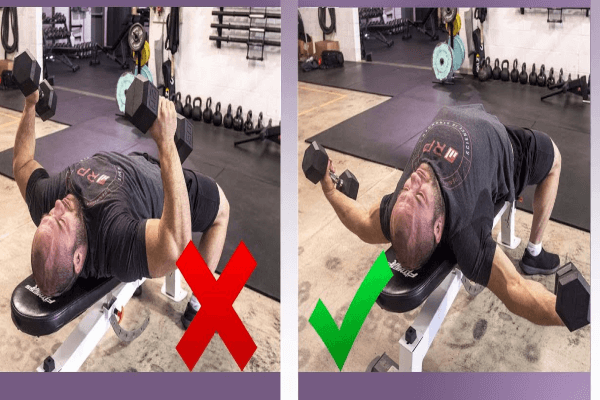
Performing Dumbbell Chest Flys correctly is crucial for maximizing effectiveness and minimizing the risk of injury. Here are some common mistakes to avoid:
- Using Excessively Heavy Weights This can lead to a loss of form and potential injury. It’s important to use a weight that allows for control and full range of motion.
- Overextending the Shoulders Lowering the dumbbells too far down or back can put undue stress on the shoulder joints, increasing the risk of injury. Keep the movement within a range that feels comfortable and safe for your shoulders.
- Bending the Elbows Too Much While a slight bend in the elbows is necessary, bending them too much turns the exercise into more of a press than a fly, reducing its effectiveness for the chest muscles.
- Lack of Control Jerky movements or using momentum to lift the weights can decrease the effectiveness of the exercise and increase the risk of injury. Focus on slow, controlled movements.
- Not Maintaining a Constant Angle at the Elbow The angle of your elbows should remain consistent throughout the movement. Changing this angle during the fly can shift the focus away from the chest muscles.
- Arching the Back Excessively Lifting the lower back off the bench to hoist the weights can put strain on the spine and reduce the isolation of the chest muscles. Keep your back flat on the bench.
- Failing to Squeeze at the Top Not bringing the dumbbells close enough at the top of the movement reduces the peak contraction of the chest muscles, which is key for muscle growth.
- Ignoring Tension The exercise should maintain tension on the chest muscles throughout the range of motion. Allowing the weights to touch at the top or rest at the bottom can decrease the effectiveness.
- Rushing Through Reps Performing reps too quickly can reduce the time the muscles are under tension, which is a key factor for muscle growth and strength. Each rep should be done with control and at a deliberate pace.
- Inconsistent Form Changing form mid-set or between sets can lead to uneven muscle development and increase the risk of injury. Keep your form consistent throughout.
Avoiding these mistakes can help ensure that you perform Dumbbell Chest Flys effectively and safely, leading to better results and reduced risk of injury. It’s always a good idea to consult with a fitness professional if you’re unsure about your form or technique.
Frequently Asked Questions
What are chest flies good for?
Chest flies are good for targeting and strengthening the chest muscles, improving shoulder stability and mobility, enhancing posture, and contributing to overall upper body strength and aesthetics.
What are the benefits of dumbbell chest?
The benefits of dumbbell chest exercises include increased chest muscle strength and size, improved upper body muscle balance and symmetry, enhanced functional strength for daily activities, and better shoulder stability and mobility.
Are chest flys good for growth?
Yes, chest flys are good for muscle growth, particularly in the pectoral (chest) muscles, as they provide targeted stimulation and stretch to the muscle fibers, which is crucial for hypertrophy.
Do pec flys make your chest bigger?
Yes, pec flys can contribute to making your chest bigger by targeting and stimulating the pectoral muscles, promoting muscle hypertrophy and growth in the chest area.
Are flys better than bench press?
Flys and bench press serve different purposes. Flys are better for isolating and targeting the chest muscles with a focus on muscle stretch and contraction. Bench press, being a compound exercise, is more effective for overall strength development, engaging multiple muscle groups including the chest, shoulders, and triceps. The choice depends on your specific fitness goals.
Are chest flys good for girls?
Yes, chest flys are good for women as well as men. They help strengthen and tone the chest muscles, improve posture, and enhance overall upper body strength, which is beneficial for everyone regardless of gender.
Conclusion
In conclusion, Dumbbell Chest Flys are an invaluable exercise for anyone looking to grow in strength, particularly in the upper body. They effectively isolate and target the pectoral muscles, promoting not just muscle growth but also enhancing overall chest aesthetics.
The added benefits of improved shoulder stability, posture correction, and the versatility offered by various modifications make this exercise a must-have in any strength-training regimen.
Whether you’re a beginner or a seasoned athlete, incorporating Dumbbell Chest Flys into your workout routine can lead to significant improvements in both your physical appearance and functional strength. Remember, consistent practice and proper technique are key to reaping the full benefits of this powerful exercise.



